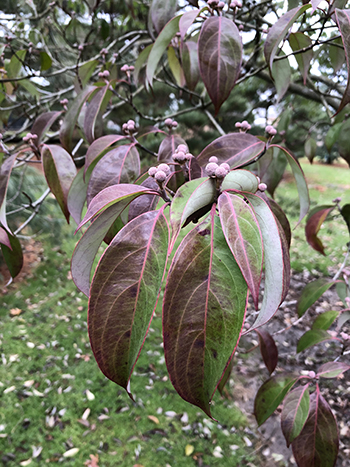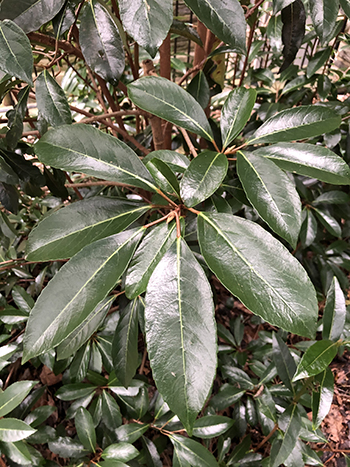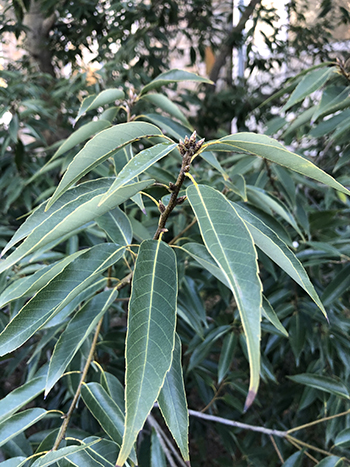
Plants of the Week: January 4

Cornus capitata ssp. angustata aptly known as the evergreen dogwood is an evergreen to semi-evergreen dogwood native to China. The small-statured flowering tree, typically growing to 20’ high and wide, bears thick, glossy green leaves that take on purple hues in winter. Leaves often curl inward at the margins as temperatures drop. Leaves abscise in spring as new growth unfurls. Flowers, composed of four pointed bracts, radiate from a central cluster of true flowers. When selecting a planting location, site in full sun to partial shade. Additionally, plants benefit from being planted in a relatively sheltered location. Evergreen dogwood is also listed as Cornus elliptica and Cornus angustata. A specimen is planted in the Pinetum. Photo credit: J. Coceano

Viburnum odoratissimum var. awabuki ‘Chindo’ (sweet viburnum) is marketed and sold as a quick growing, dense hedge or screening shrub for zone 7 – 11 gardens. Lustrous dark green leaves serve as the backdrop for fragrant white flowers followed by pendant clusters of red fruits. Given the marginal hardiness of the shrub in our area, a specimen was tucked in a sheltered pocket along the north side of the Bond Lodges. It has thrived in this location. The Missouri Botanic Garden shares that “plants generally appreciate some afternoon shade in hot summer climates. If growth is attempted in USDA Zone 6, plants should be sited in protected locations and given a good winter mulch.” Photo credit: J. Coceano

An evergreen oak in Pennsylvania? I was mesmerized when I first encountered Quercus myrsinifolia. The Chinese evergreen oak is considered one of the most cold-hardy and perhaps most beautiful of the evergreen oak species. Glossy green leaves are retained throughout the winter. Over the past ten years I’ve noticed that during particularly cold spells, some leaves will drop over the course of the winter months. New growth emerges a stunning bronze-purple. As the new leaves unfurl, older leaves drop. Another observation, with mention from other sources, is variation in form and habit. Some plants take on a statuesque habit with a classic single trunk and oval-shaped canopy while others appear more shrub-like in nature, with low branches and an asymmetrical form. A stunning specimen is located between the Cunningham House and Wister Center. A second specimen, more wild and loose in habit, grows between the Wister Center and Willets Residence Hall. Photo credit: J. Coceano





No Comments